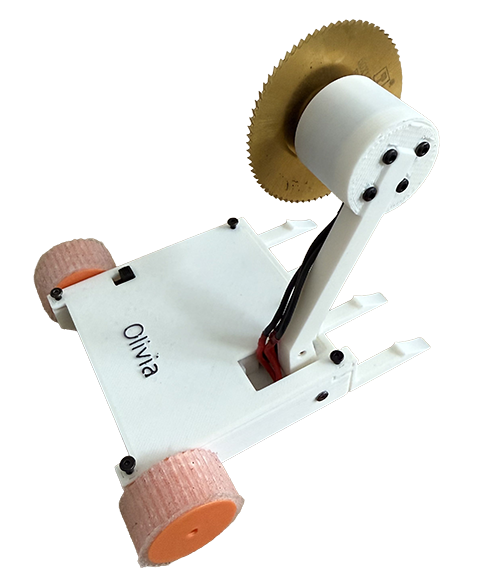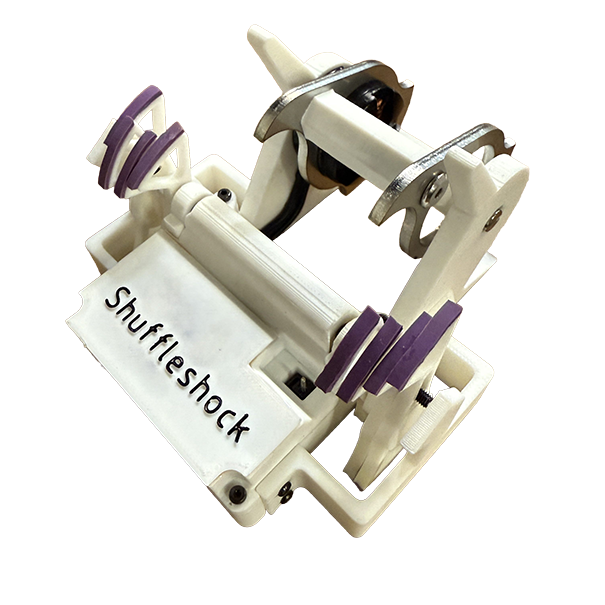How a combat robot works
Combat robots, best known from the popular TV show BattleBots, are a fascinating example of engineering, creativity, and strategy. They are not autonomous machines, but remote-controlled “drones” whose sole purpose is to destroy or immobilize their opponents in the arena.
The functioning of these robots is a complex interplay of robust construction, powerful motors, effective weapons, and precise control.
Anatomy of a combat robot
Each combat robot is unique, but they all share basic components that enable them to move, attack, and withstand blows.
Chassis and construction
The basis of every robot is the chassis, i.e. the frame to which all other components are attached. The materials used to manufacture it vary depending on the team’s strategy and the weight limit, which is set at 250 pounds (approximately 113 kg) in BattleBots. Aluminum alloys are commonly used for their low weight, steel for strength, or even titanium for the most exposed parts.
Armor is key to survival in the arena. Teams choose different types and thicknesses of armor, often made of hardened steel (such as AR500), to withstand the crushing blows of spinners or piercing spikes. Armor design is a compromise between maximum protection and keeping the weight as low as possible so that more weight can be allocated to weapons and propulsion.

Pohon
The drive system provides the robot with mobility, which is essential for both attacking and escaping in the arena. It consists of several key elements:
• Motors: Powerful DC electric motors are most commonly used, providing high torque for rapid acceleration and pushing opponents.
• Batteries: The power source is usually high-capacity lithium-polymer (Li-Pol) batteries, capable of delivering the enormous amount of current needed for motors and weapons.
• Speed controllers (ESC): These electronic modules control the speed and direction of the motors based on signals from the remote control.
• Wheels and chassis: Teams experiment with different types of wheels and chassis configurations (two-wheel, four-wheel, six-wheel, or tracked) to achieve optimal traction and maneuverability on the arena floor.

Weapons
Weapons are what make BattleBots so exciting. The rules are fairly loose in this regard, allowing for a great deal of creativity. Among the most common and effective types are:
• Spinners: Massive pieces of metal that spin at tremendous speeds. They are divided into horizontal and vertical spinners and can deliver devastating blows that throw opponents into the air and tear their armor.
• Flippers: These use a pneumatic or electric system to quickly eject a powerful lever that can flip or throw a robot into the air.
• Hammers and axes: Powerful, striking weapons that attempt to break through the opponent’s armor from above.
• Vices and grabbers: These allow the robot to grab and control the opponent’s movement, or possibly carry them to dangerous elements of the arena.

Control of combat robots
Each robot is controlled by a team member using a sophisticated remote control. These systems operate on radio frequencies and must ensure a reliable and secure connection even in environments full of interference.
- Transmitter: The controller in the operator’s hands, which typically has two levers. One controls the robot’s movement (forward, backward, turning) and the other is used to activate the weapon.
- Receiver: A small box inside the robot that receives signals from the transmitter and transmits them to the speed controllers and weapon systems.
- Safety features: Each robot must have a main switch for easy and quick deactivation. Remote controls also have safety features such as automatic disconnection when the signal is lost to prevent the robot from becoming uncontrollable.
Road to the arena: Design and construction
Building a competitive combat robot is a process that requires at least basic knowledge of engineering, electronics, and programming.
- Design: It all starts on a drawing board, or rather in CAD software. Teams design every detail of the robot, from the shape of the chassis to the placement of each screw.
- Production: This is followed by the actual construction, which involves metalworking, welding, 3D printing, soldering electronics, and assembling all the components together.
- Testing: Before the competition, the robot must undergo thorough testing to identify and correct any weaknesses in its design or electronics.
In the arena, the winner is determined not only by the strength and durability of the robot, but also by the skills of the operator and the chosen strategy. The match lasts three minutes, and if one of the robots is not destroyed, the judges decide the winner based on the damage inflicted, aggressiveness, and control over the match.

